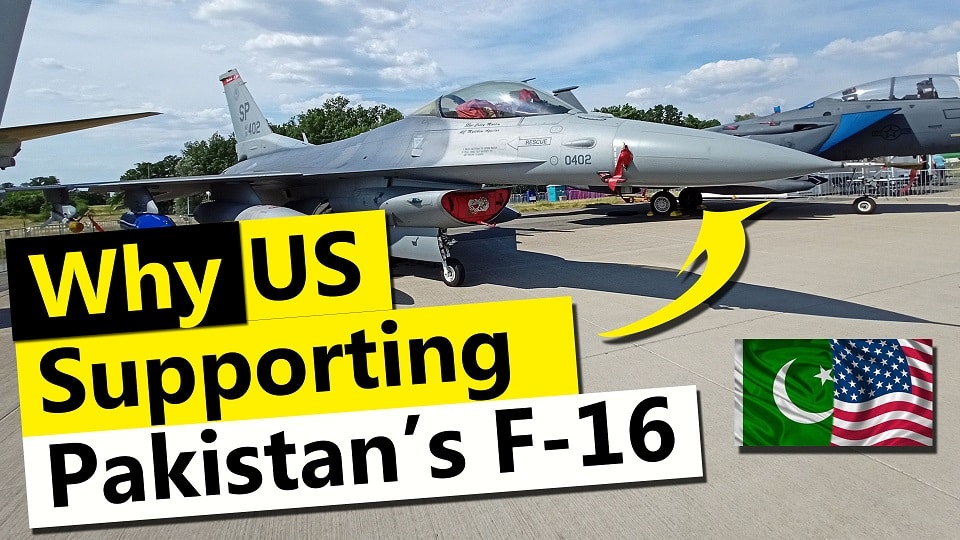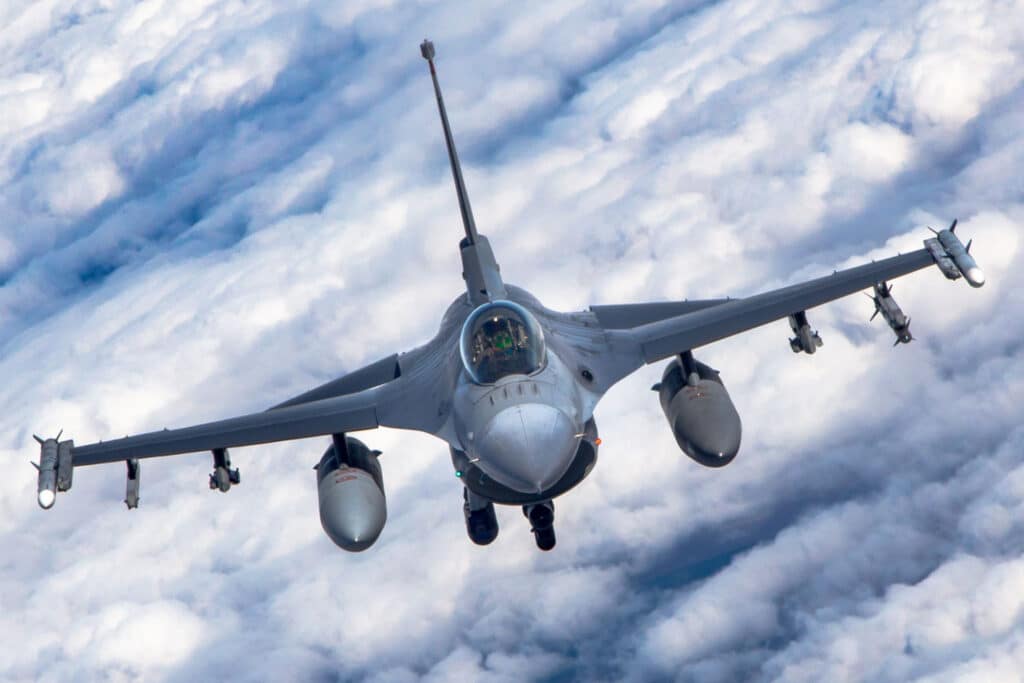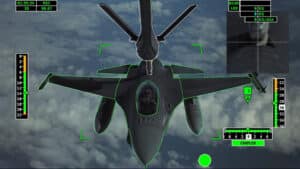Aviation
The reason why the US support Pakistan’s F16 aircraft : Here are the 3 factors
Many theories exist regarding how the US came to support Pakistan’s F-16 program and how they were convinced of the agreement.

Many theories exist regarding how the US came to support Pakistan’s F-16 program and how they were convinced of the agreement.
These three takeaways are the big factors behind this deal. the impression of business agreements to put influences the US to provide aid and support to Pakistan.
1. Changing the prime minister of Pakistan
Imran Khan, the departing prime minister, was the most supportive of Russia’s friends and even flew to meet Putin after Russia attacked Ukraine and demonstrated support for Russia. Despite other issues, he becomes overly dependent on China, and he even supports purchasing additional J-10 fighter jets, which they recently acquired.
He claimed that in 2021, the nation would be forced to bear the burden of the errors done by the US in Afghanistan during its two-decade war on terror. He primarily opposed western nations, which he also claimed US responsible for crises and terrorism. and phase in Afghanistan’s intolerable difficulties.
10 Most Expensive Fighter Jets In The World(Opens in a new browser tab)
The US was waiting for Imran Khan’s rule to shift, and after Shehbaz Sharif became the new prime minister on April 11, 2022, a bilateral relationship began to grow. The US would take Pakistan’s request for F-16 fleet support very seriously.
Greece proceeds with purchase of 20 Lockheed F-35 fighter jets(Opens in a new browser tab)
[the_ad id=”15771″]
2. There are too many reliances on Chinese participation in international defense.
China is Pakistan’s only truly helpful neighbor, and both nations are growing cooperatively to assist economic and product development. It has no choice but to work with China in such a situation. With the new fighter jets and armed weapons, it was necessary to provide military support against the border tensions with India and Afghanistan as well as internal terrorism activities.
[the_ad id=”15771″]
The US is currently focused on Pakistan’s demands and requirements. And it would definitely be in opposition to the fighter jet export agreement from China. additionally to divert Pakistan’s focus from China to the United States’ defense assistance. and it would significantly alter this. Moreover, it might assist in lending money to Pakistan to bolster its aid efforts.
3. Putting pressure on India’s FA18 agreement?
The F16 agreement is a support program, not a sale of a new fighter aircraft. Without assistance, the Pakistani F16 fighter will continue to be inactive. However, there is a rumor that the US may enter into a game-changing deal with Pakistan’s defense, pressuring India to purchase FA18 fighter jets while still wanting to maintain counteroffers to Pakistan and maintain a friendly environment. The US tries its best to support India in the purchase of other defense products. Pakistan currently has 85 F-16 fighter jets, 75 of which are operational.
For India, it won’t make any difference because it has bilateral support from the European and Russian nations and can choose to purchase any jets that are appropriate for its needs.
[the_ad id=”15765″]
The only source of Pakistan’s defensive capabilities is the US. to develop those nations without heavily depending on China and other nations.
But given that the instability in neighboring nations poses a threat to the nations, this may result in fresh problems for India.
4. In order to improve the fleet, Turkey has also received F16 support.
Not just Pakistan has received support for the F-16. The United States supports Turkey as well. In September of last year, Turkey formally requested to purchase 80 modification kits for its current fighters as well as 40 new Block 70 F-16s manufactured by Lockheed Martin.
The Biden administration restated its intention to supply dozens of F-16 fighter jets to Ankara in order to improve its current fleet, while Turkey stated that it would accept Sweden’s and Finland’s aspirations to join the NATO alliance.
The Pakistan Air Force’s F-16 program is being supported by a planned Foreign Military Sales case, which the US government has informed Congress about. As part of a long-standing policy, the US offers life cycle maintenance and sustainment packages for platforms of American origin to Pakistan, a crucial counterterrorism partner.
However, this development could have an impact on some of Pakistan’s current alliances and pose a fresh threat to its neighbors. Share your thoughts on Pakistan’s support for F16 fighter jets.

Aviation
Airbus Enhances A350 Cabin with 10-Abreast Seating

Airbus has announced a new partnership with Jiatai Aircraft Equipment, a Chinese aircraft seating manufacturer, to supply upgraded economy-class seats for the A350 widebody series.
This collaboration, unveiled at the 2024 Airshow China, focuses on developing a newly designed economy seat tailored for the A350‘s New Production Standard (NPS) cabin.
One of the key features of the NPS cabin is the ability to accommodate 17-inch wide economy seats, compared to the previous 16.5-inch wide seats that airlines were limited to in the A350’s earlier configurations.
British Airways Unveils Its Brand-New First Class Cabin for the Airbus A380
This change is made possible by the expanded space in the NPS cabin, which is 35 inches longer and 4 inches wider than the previous version. This extra space is achieved by slightly moving the cockpit wall forward and shifting the rear pressure bulkhead back by one frame.
The wider cabin allows airlines to add up to 30 extra economy seats without compromising comfort. For airlines opting for a 3-4-3 seating layout, the 17-inch wide seats are an excellent choice for a more comfortable passenger experience. However, some airlines, such as Iberia, may choose to retain a 9-abreast layout with wider seats for added comfort.
The NPS cabin also offers enhanced flexibility for airline operators. One major advantage is the ability to easily switch between a 9-abreast and 10-abreast seating configuration without requiring significant downtime for aircraft reconfiguration. Airlines can use the same seat rails, tracks, and IFE interfaces, making the transition smoother and quicker.
Etihad Airways Unveils 10 Exciting New Routes for 2025
In addition, the design of the floor attachments and air-conditioning systems has been optimized for 10-abreast seating, meaning airlines can upgrade their cabins without needing to make substantial modifications to the aircraft’s structure.
Though it’s still unclear when Jiatai’s economy-class seats will be officially added to the A350’s Buyer Furnished Equipment (BFE) catalogue, the collaboration marks a significant step toward enhancing the A350’s cabin offerings.
With this partnership, Airbus is providing more seating options for airlines, ensuring that they can meet diverse customer needs while improving overall operational efficiency.
-

 Aviation2 months ago
Aviation2 months agoMicrosoft Flight Simulator Raises $3 Million to Bring Back the An-225 Mriya
-

 Airlines2 months ago
Airlines2 months agoQatar Citizens Can Travel to the United States Without a Visa
-

 Aviation2 months ago
Aviation2 months agoQatar Airways bans these new Electronic Devices on plane
-

 Airlines2 months ago
Airlines2 months agoJapan Airlines Rolls Out Free Domestic Flights to International Passengers
-

 Defence2 months ago
Defence2 months agoWhich Country Has the Largest Fleet of Fighter Aircraft?
-

 Airport2 months ago
Airport2 months agoWestern Sydney Airport Welcomes Its First Plane After 6 Years of construction
-

 Airlines4 days ago
Airlines4 days agoDAMAC Air: Dubai’s New Luxury Airline Offers Free Flights for Registration
-

 Aviation2 months ago
Aviation2 months agoDid you know ? Once Boeing 747 carried 1088 passenger in 1991










